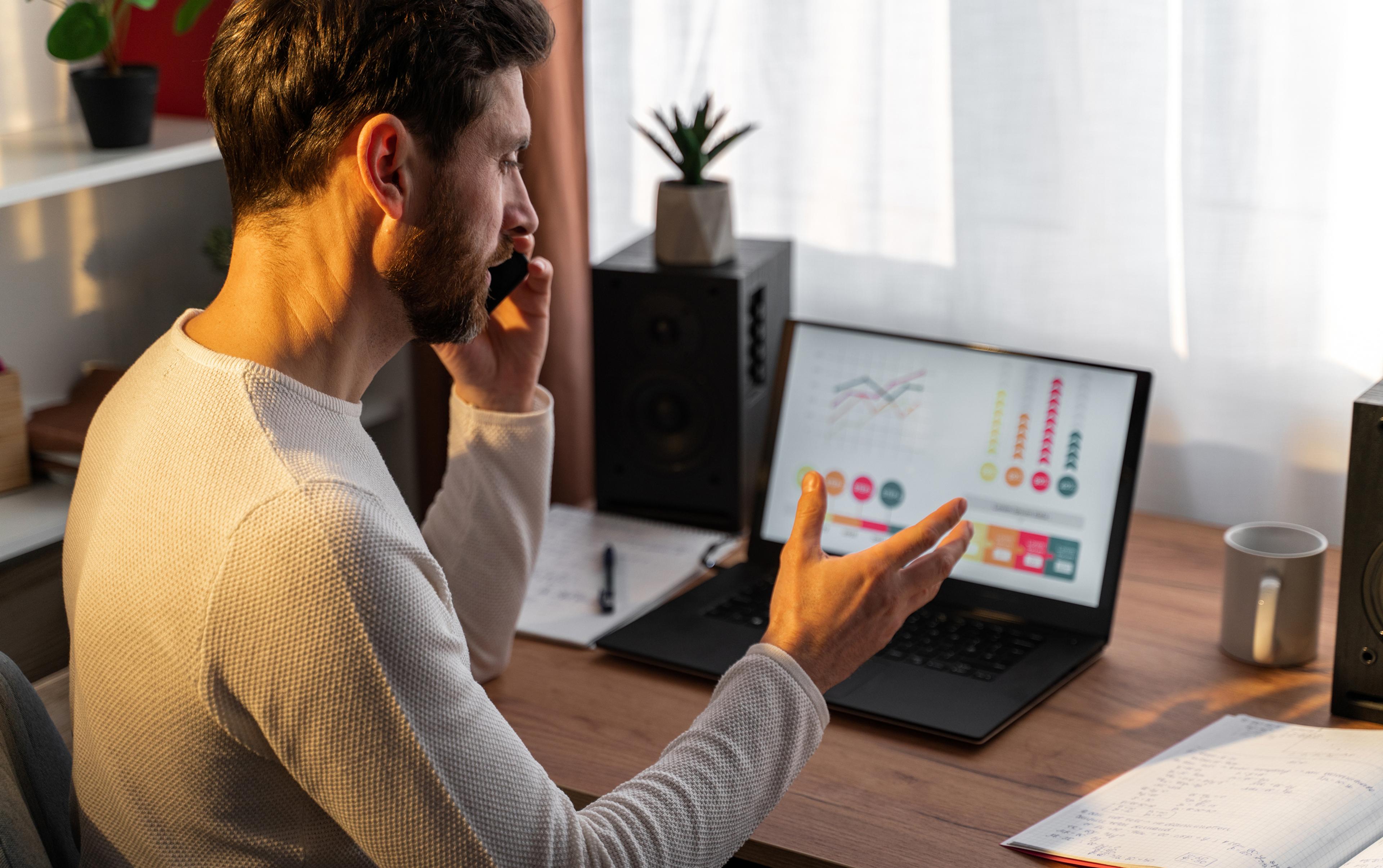Secure Google visibility
In today's highly competitive online landscape, sustainable visibility on Google is no longer a matter of course. Increasingly, website operators are faced with the problem that their pages are no longer indexed or that their ranking drops sharply after a Google Core Update. The term "Google Index" is becoming the focus of every optimization: only those who understand how Google crawls and indexes content can take targeted action against index losses and successfully position their website in the long term.
A specialized website agency can provide crucial support - whether in identifying the causes of an index loss, implementing proven measures for Google indexing or through continuous website maintenance and monitoring strategies that sustainably improve the ranking.
Find out what really matters when it comes to getting your website indexed by Google - and how an experienced agency can provide you with professional support along the way.
Recognize causes for Google index loss
The loss of visibility in the Google index often occurs gradually. Many sites only become noticeable when visitor numbers suddenly plummet or important content disappears from the search results. In most cases, it is not individual errors, but a combination of weak points: outdated content, technical deficits and a lack of maintenance.
Frequent weak points
A well-founded index audit brings light into the darkness. Pages with little content, outdated information or poor structure fall through the cracks more quickly today than they did a few years ago. Technical problems - such as long loading times, poor mobile usability or incorrect redirects - can also lead to Google ignoring or even removing individual pages.
Furthermore, those who do not provide any content updates for years, do not develop their website further or generate hardly any external signals such as social media activity will appear increasingly irrelevant to Google. Visibility does not come from mere existence, but from recognizable activity and utility.
Google Core Update and effects on indexing
What happens during a core update?
In a core update, Google makes far-reaching changes to the search algorithm that can affect the ranking of many websites. The aim is to further improve the quality and relevance of search results for users. The focus is not on a specific page or a specific topic, but on refining the algorithm as a whole. Among other things, the depth and accuracy of content, originality compared to other sources, user behavior - such as how long they stay on a page - as well as technical factors such as loading speed, mobile optimization and clean code structure are evaluated. Pages that do not meet these quality requirements often lose visibility. However, this is not a manual penalty, but rather a reassessment of the content in the context of the changed criteria.
Who is particularly affected?
Websites whose content is superficially prepared, offers little added value or is very similar to other sources are often particularly badly affected. Technical deficits - such as slow loading times, a lack of mobile optimization or outdated technologies - can also be a cause of ranking losses. Pages with a low dwell time, low user interaction or without relevant backlinks quickly fall behind. The effects are often drastic: previously well-placed URLs slide far down in the search results or disappear completely from the index, which can lead to massive drops in visibility. Those who do not take the signals of a core update seriously and do not continuously develop their website run the risk of losing important reach and potential customers in the long term.
Improve Google indexing - strategies for lasting visibility
Update content regularly
Google attaches great importance to the topicality and quality of content. Texts that are outdated or no longer offer any clear added value quickly lose visibility. In order to remain permanently present in the search results, content should be regularly revised, expanded and restructured. Clear language is just as important as a sensible structure - users must be able to find what they are looking for quickly. The targeted insertion of keywords that match current search trends also increases relevance. In addition, visual content such as infographics, explanatory videos or interactive elements improve the user experience and are rated positively by Google.
Ensure technical accessibility
A technically clean website is the foundation of any successful indexing. Pages should load quickly, be accessible and have a responsive design - in other words, they should work flawlessly on all end devices. Technical SEO measures such as image compression, lazy loading, clean URL structures and source code optimization help to reduce loading times and make crawling processes more efficient. It is also essential to regularly check for indexing problems: "noindex" tags, robots.txt errors, broken internal links or incorrect redirects can lead to content disappearing from the index or not being included at all.
Strengthen backlink quality
Backlinks are still considered one of the most important ranking factors. However, it is not the number that is decisive, but the quality of the referring pages. High-quality backlinks from trustworthy, thematically relevant sources strengthen the authority of a website and increase its visibility. At the same time, harmful or artificially generated links should be identified and removed - for example with the help of the Disavow tool in the Google Search Console. High-quality content, strategic content marketing, guest posts and collaborations with reputable websites or media help to build sustainable links.
Using structured data
Search engines can interpret content better with so-called structured data (schema markup). They provide additional information about content, such as whether it is a product, an article, a recipe or an event. This can lead to Google displaying so-called "rich snippets" - such as star ratings, FAQ dropdowns or price information - and thus increasing the click rate. Integration takes place via standardized formats such as JSON-LD and should be regularly checked and kept up to date.
Analyze and optimize user behavior
Google measures how users interact with a page - e.g. via dwell time, click paths or bounce rates. A page that many visitors leave immediately sends out negative signals. It therefore makes sense to regularly analyze how users behave using tools such as Google Analytics or the Google Search Console. On this basis, content and design can be improved in a targeted manner: clearer call-to-actions, better readability, more intuitive navigation or the targeted elimination of "pain points" lead to better user signals - and thus to greater visibility in the index in the long term.
With pleasure! Here is your revised text in extended form with H2 and H3 headings:
Website maintenance - why it is the foundation of your visibility
Many operators think of SEO as a one-off measure
In practice, however, it is clear that real, sustainable visibility on Google is not a one-off feat, but the result of continuous work. Google's algorithm is constantly evolving - new updates regularly change the evaluation criteria for content, technology and user experience. If you want to keep up, you need to regularly maintain, review and adapt your website. So it's not about working towards a good ranking in the short term, but about building a stable, trustworthy online presence in the long term. Website maintenance is therefore not an optional extra, but a duty - and the foundation on which reach, trust and success on the web are built.
Care means more than just content
Website maintenance is often confused with simply updating texts. But it goes far beyond that: technical maintenance and structural care are also crucial for good visibility. This includes regular CMS updates (e.g. WordPress, TYPO3), security checks, fixing 404 errors or dead links as well as monitoring loading times, responsive design and server availability. Faulty redirects, security vulnerabilities or outdated plugins not only have a negative impact on the user experience - they can also lead to pages disappearing from the Google index or being rated lower. A clean, functioning site signals to Google: This website is active and reliable - this has a positive effect on the ranking.
When an agency should provide support
Especially for larger web projects, e-commerce sites or highly networked platforms, it is advisable to call in external support. Professional agencies not only offer the necessary technical expertise, but also tried and tested tools and strategies to optimize the website holistically. They regularly analyze data from the Google Search Console, check server performance, improve internal links and ensure a clean site architecture. They also identify weaknesses and risks at an early stage - before they have a negative impact on visibility or sales. The result: more stability, faster loading times, improved user guidance - and a permanently better position in the search results.
Website ranking - what your key figures reveal about visibility
Why key figures are crucial for SEO success
If you want to understand how well a website is really performing, there is no getting around a regular evaluation of key SEO figures. Concrete data is the only way to determine whether optimization measures are working - or whether there is a need for action. The most important key figures include impressions (i.e. how often a page was displayed in the search results), the click-through rate (CTR), the average position for certain keywords and the proportion of organic visitors compared to total traffic. These metrics show how visible a website is, how well it performs in search - and whether the content is really relevant and appealing to users. Changes over a longer period of time also provide valuable information, e.g. on seasonal effects or reactions to Google updates.
Recognize abnormalities at an early stage and interpret them correctly
Falling click numbers, a decline in impressions or a deterioration in positioning for relevant keywords are clear warning signals. They can be due to very different causes: outdated content, technical errors, a deteriorated user experience or new competitors on the market. An increased bounce rate, for example, could indicate that the content does not match the search intention or that the page is loading too slowly. Stagnating rankings, on the other hand, indicate that content is okay - but not strong enough to overtake the competition. In order to better narrow down the causes, it is also worth taking a look at the backlink profile, the domain rating, internal links and the loading speed. Only those who consider all of these signals in combination can make targeted, effective optimizations - and secure or improve their own visibility in the search results in the long term.
Conclusion
Being indexed is not a one-off achievement - it is an ongoing process. If you want to survive online in 2025, you not only need good content, but also stable technology, a clean structure and real maintenance. Google rewards pages that are continuously optimized, maintained and filled with relevance. Visibility is created where added value, topicality and trust come together.
Those who analyze regularly, optimize in a targeted manner and rely on professional support when needed will stay in the race for good rankings - not despite the core updates, but precisely because of them.



